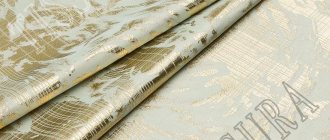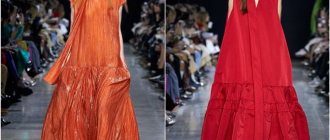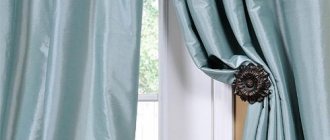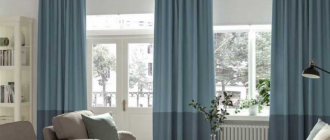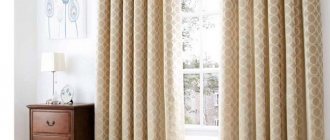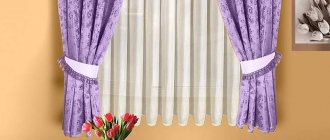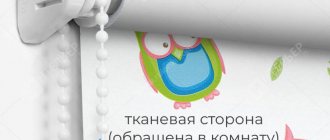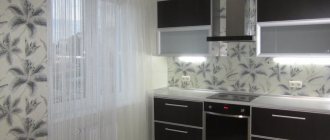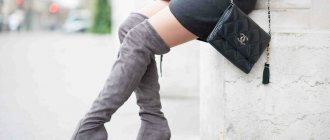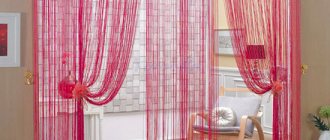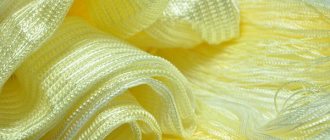The word “brocade” from Persian means “matter”; this is the name given to patterned lush silk, which came to Europe straight from Eastern masters. Brocade is a material woven from silk threads. Brocade is very beautiful, has a rich color. As a rule, it is made of silk and is highly durable. Brocade can be single or multi-colored. Brocade is sewn using special machines. At the same time, both machine and manual work can be used for it. Very beautiful and original products are obtained by hand-making brocade.
- Luxurious brocade, like silk, was first invented in China many centuries ago.
- At that time, heavy fabric was created from natural silk and embroidered only with precious threads made of pure gold.
- Only the imperial family could afford to wear clothes made from this material.
- To this day, brocade is considered a festive fabric for special occasions.
Some scientists believe that Chinese brocade production was actively developing already during the reign of the Han Dynasty, the initial period of which falls on 209 BC. This may well be true, since sericulture in China originated around 1000 BC. To create brocade, a special official was even assigned, who was obliged to monitor the quality of production of artistically integral patterned fabric. Brocade items were an important symbol of aristocrats. Gradually, other commercial aspects of this enterprise were revealed: brocade eventually became an important source of financing for the military. The fabric was actively exported to nearby countries, which also gave impetus to technological development. A special institute for the study of this material was even opened, whose employees contributed to the creation of new varieties of dense silk.
The extraordinary importance of brocade can be judged by two facts:
- Firstly, this fabric was a valuable product, a real luxury on the Great Silk Road.
- Secondly, during the battles of the war, in addition to jewelry, talented brocade makers could also be captured.
When the secrets of creating brocade came from China to Turkey, Persia and Byzantium, the appearance of the fabric changed slightly. The canvas began to be richly decorated with expensive stones or intricate, elegant embroidery. In India, production secrets were transferred to local residents directly from Chinese immigrants. According to legend, it was in exquisite, shiny gold brocade that Buddha was wrapped after his death. In the 16th century, brocade came to Russia, and the production itself began to be practiced only in the 18th century. In our country, such fabrics were used to sew clothes for wealthy nobility or church representatives. The interior of the house was often decorated with brocade; for decorative purposes, gold or silver threads were often replaced by more affordable metal ones.
Composition and properties of brocade material
Genuine brocade is a patterned, dense fabric made of silk, embroidered with precious threads of gold or silver. But gradually more budget-friendly options appeared, when instead of a precious thread they used a metal fishing line twisted around a thread made of cotton, silk or linen.
In the past, this expensive fabric was produced only by hand, using the highest quality silk raw materials. Already in Europe they learned to make brocade on automated machines. Today, technological solutions and innovations come to the rescue, making it possible to slightly reduce the cost and speed up production. Silk is often replaced by other materials (both natural and synthetic or artificial), but the appearance and quality of the fabric still remain incomparable.
- High price and heavy weight are the main characteristics of brocade, regardless of technology and the choice of particular raw materials.
How it is produced
Authentic classical Chinese brocade has been woven since ancient times using the best silk raw materials, expensive precious threads, stones and even unusually colored feathers of wild birds. Talented specialists took more than ten years to create one dress for the emperor by hand. It was a long, labor-intensive process, but the spectacular final product was worth it. If we turn to a specific type of brocade, for example, Sun brocade, the entire process consisted of more than 20 independent stages from processing raw materials to dyeing the finished fabric. For a very long time, the secrets of making brocade were not revealed; in Byzantium, in general, the dissemination of this information was punished almost in the same way as treason against the state.
Nowadays, of course, technology has changed significantly, but the essence remains the same. The composition of modern brocade is not limited by the conventions of the past. Threads of silk, wool, cotton or viscose are taken as the basis of textiles. To create an ornament, thin threads of base/semi-precious metal, gold or silver are required, which are used to wrap the weft threads. The warp and this combined weft are gradually intertwined along the contour of a pattern of different sizes, which is then woven into the fabric.
Types of brocade
There were many historically significant types of brocade, but gradually all names were replaced by a single name. Today it is customary to divide this fabric according to its composition:
- Classic or traditional. The fabric is made from natural silk fibers and metal threads.
- Cotton. Lurex threads are added to natural cotton to imitate precious ones.
- Woolen. This brocade is made from wool with the addition of metal threads.
- Made from viscose and lurex. Refers to the available analogues of brocade.
- Lycra brocade containing lurex threads. Thanks to elastane, the fabric becomes elastic and pleasant to the touch. Stretch fabrics are usually thin and light.
Several varieties of brocade, whose names are already forgotten today:
- Altabas is a thick silk fabric with a floral or geometric pattern made of gold or silver thread. There are versions that this canvas (unlike ordinary brocade with only ornaments made of metal threads) could be made entirely of precious threads. Only the emperor and people close to him could afford clothes made entirely from altabas. This fabric was brought to our country by eastern traders around the 16th century. Ceremonial church robes for the clergy were sewn from altabas. The high density of this fabric corresponded to the solemn monumentality of religious holidays. The word “altabas” went out of use at the beginning of the 18th century with the decrees of Peter I, which prohibited wearing costumes that emphasized the status of a certain class. Since then, this word has replaced the generic name “brocade”.
- Suzhou Song Brocade, a vibrant silk brocade with fine, delicate designs, is protected as an intangible cultural heritage item in China. This material was popular not only for sewing clothes, but also as a basis for calligraphy or painting.
Peculiarities
Brocade, as a type of silk fabric, came to us from the East. The word is of Persian origin, translated it means “matter”. China is considered the birthplace of this fabric. It was there, at the end of the 13th century, that brocade was born. Then she began her journey around the world, winning the hearts of the nobility, kings and emperors.
Brocade curtains are an ideal option for a classic interior.
Initially, threads of precious metals were woven into brocade, making the fabric very expensive and heavy. And in Byzantium they invented a way to make an already expensive fabric truly priceless : gold and silver threads were combined with skillful embroidery, pearls, rubies and emeralds.
The tradition of hand-made brocade still survives in the East, but throughout the rest of the world the production of brocade fabric has undergone significant changes. In most cases, viscose rather than silk is used as a base. Threads of gold and silver are replaced with lurex. The material has not lost its shine and beauty, but has become easier and more practical to care for.
Areas of application of brocade
The main area of application of the fabric is certainly the creation of clothing for special occasions. In the East, traditional robes are made from this fabric, and in India, wedding dresses are made. Bright patterned brocade is ideal for concert or theater costumes, for recreating the image of clothing in a certain historical period. Yes, these products are not weightless at all, but the heavy weight of the fabric and decor itself adds effectiveness and solemnity to the image. However, modern technologies make it possible to achieve dense canvases without weighing down their base. That is why brocade will look quite organically as self-sufficient elegant evening or wedding dresses that require a minimum of accessories and decorations. More affordable options made from synthetic threads are suitable for creating furniture upholstery, bedspreads, tablecloths, curtains and even shoes!
Advantages and disadvantages of brocade fabric
The main characteristics of brocade are:
- High density, which is why the fabric most often has heavy weight.
- Tough and unbreakable. These qualities make it easy to use, it holds its shape well and practically does not need ironing.
- Beautiful shine. Externally, this fabric looks luxurious and impressive.
- Air-permeable and hygroscopic.
- Drapes perfectly.
Main disadvantages:
- Brocade does not like high temperatures.
- High price.
- Metal threads wear out quickly.
Application in the interior
Bedroom
Sliding brocade curtains fit perfectly into the interior of a bedroom decorated in a classic style. They are able to create a cozy atmosphere of relaxation and tranquility. Due to the high density of the fabric, curtains protect the room from the sun and provide restful sleep during the daytime.
Living room
This room can tell much more about its owners than any room in the house. The design of the hall must be thought out to the smallest detail. Curtains made of brocade will decorate the living room and emphasize the luxury and richness of the interior. They harmoniously combine with decorative elements made in a classic style.
Children's
When choosing curtains for a children's room, it is better to give preference to a more practical fabric. Brocade is too expensive; a small child can easily ruin the fabric.
Kitchen
It is not recommended to hang brocade curtains in the kitchen; they will look extremely inappropriate there. The material will quickly fade, become dirty, and absorb fat. Here it is better to hang lifting models made of polyester.
Cost of a meter of fabric
At the TISSURA Fabric House, the price of brocade varies depending on the composition and manufacturer. Italian brocade Ruffo Colli, jacquard with bright blue flowers - 19,300 rubles per meter. The fabric is a weave of fibers of different compositions, including silk. Gold metallic threads shimmer beautifully, creating a spectacular soft shine. French Dutel brocade with a large copper floral pattern on a black background can be purchased for 5,230 rubles/meter.
- This brocade is based on cotton, polyester and metal threads.
- The folds of the complex patterned fabric drape well and keep their shape.
- Looks great in combination with airy lace, thin organza, smooth satin, delicate tone-on-tone velvet or a contrasting solid color.
You can buy brocade, as well as other dress, costume or lining fabrics in the catalog of the TISSURA online store.
How to care for and wash brocade
Since brocade is created by interweaving threads of very different compositions, caring for it requires special care:
- First, we recommend that you read the manufacturer's recommendations.
- It would be equally correct to trust dry cleaning specialists, especially if the cost of brocade is quite high and you do not want to experiment.
- Remember that the metal of the threads in brocade can tarnish when interacting with alkali, so when washing, use only mild, gentle detergents.
- After washing, do not wring out the fabric.
- You can dry brocade clothes horizontally on a dry towel, carefully straightening the fabric.
- Or vertically on hangers.
The main feature of brocade is that it does not wrinkle, so there is no need for ironing. But if such a need arises, you can use a damp cloth to iron the seams on the wrong side of the fabric.
- Machine washing is generally contraindicated for brocade, especially those made from natural threads. Since this fabric is not used for everyday use, it should be washed rarely and only when a real need arises.
- To ensure that brocade clothing does not lose its presentable appearance, it is worth considering several nuances.
- Wash the item by hand in cool water, approximately room temperature.
- Synthetic brocade can be machine washed, but only if the manufacturer allows it.
- Don't forget about the delicate mode and turning off spinning and drying.
Due to various external factors, the fabric wears out quickly, and metal threads may lose their shade. To avoid this, you should avoid active physical impact on the brocade, for example, do not rub the fabric too much during washing. Stains need to be removed carefully, preferably with the help of specialists.
Care
Brocade is not the easiest fabric to care for. It should be remembered that this is not just a fabric, but an interweaving of threads of different textures. Such matter requires careful care:
- Under no circumstances should the fabric be exposed to high temperatures, acidic or alkaline environments. Otherwise, the metal threads may become dull.
- It is better not to experiment with washing; you should get rid of dirt using dry cleaning. If you decide to wash the product, do it manually and use water at room temperature.
- Removing stains from brocade is a difficult task. Trying to clean the material from the front side, you will only “drive” the dirt inside. You need to proceed as follows: clean the top part of the dirt with the blunt side of a knife, place a terry towel on the stain and remove the dirt with a damp cloth.
- Brocade fabric does not wrinkle, so there is no need to iron it. You can only iron the seams using steam treatment.
Choose the shade of the fabric based on the color of the furniture.
